What Is a Ghost Kitchen Key Takeaways:
- Delivery-Only Dining Model: Ghost kitchens operate without dine-in spaces, focusing exclusively on preparing meals for delivery through apps and online platforms.
- Pandemic-Fueled Growth: Once a niche concept, ghost kitchens surged during COVID-19 and are now projected to generate over $60 billion annually in the U.S. by 2025.
- Low-Cost, High-Flexibility for Owners: By cutting front-of-house expenses and enabling multi-brand operations, ghost kitchens allow restaurateurs to scale quickly and adapt to shifting consumer demand.
What Are Ghost Kitchens?
A ghost kitchen – also known as a cloud kitchen or virtual kitchen – is essentially a restaurant that exists solely to cook meals for delivery, without any dine-in space for customers.
These operations run behind the scenes: customers place orders through apps or websites, cooks prepare the food in a commercial kitchen tucked away in a warehouse or other off-site location, and drivers pick up the meals to bring them straight to your door.
Ghost kitchens come in various forms, but they all share key characteristics. They are delivery-focused by design, built to fulfill online orders quickly and efficiently. Many ghost kitchens house multiple restaurant brands under one roof, allowing one kitchen team to cook for several virtual restaurants at once.
In short, a ghost kitchen is a restaurant without a dining room, optimized for the age of online ordering and on-demand food delivery.
How Do Ghost Kitchens Work?
Ghost kitchens function as behind-the-scenes food production hubs built solely for delivery.
Instead of greeting customers in a dining room, these kitchens receive orders digitally through apps like Uber Eats, DoorDash, or Grubhub.
Once an order comes in, cooks prepare the meal in a commercial-grade facility, often shared with multiple restaurant brands.
Couriers then pick up the food from designated driver stations and deliver it straight to the customer’s door.
Because there’s no need for prime real estate, decor, or front-of-house staff, ghost kitchens can focus entirely on efficiency, speed, and maximizing output.
Many operators even run several virtual restaurants from one kitchen, testing menus and scaling concepts with minimal overhead.
This streamlined, tech-driven approach makes ghost kitchens uniquely suited for today’s on-demand dining culture.
Ghost Kitchen Concepts
Ghost kitchen concepts are as diverse as the customers they serve, ranging from single-brand operations to multi-restaurant collectives under one roof.
Some focus on niche cuisines, like vegan comfort food or Korean street snacks, while others run multiple virtual brands from the same kitchen to maximize resources.
A single operator might use the same staff and ingredients to prepare tacos, burgers, and salads for three different online-only restaurants, each marketed under its own name on delivery apps.
Other models include celebrity-backed ventures, limited-time “pop-up” menus, and partnerships where a traditional restaurant uses extra kitchen capacity to launch a virtual brand.
This flexibility allows ghost kitchens to pivot quickly—testing new food ideas, tapping into trending cuisines, and expanding into new markets—without the risk and expense of opening full-service dining locations.
The Rise of Ghost Kitchens in the United States
Ghost kitchens may sound like a novel concept, but their roots in the U.S. go back a bit – and their growth has accelerated rapidly in recent years.
Early forms of ghost kitchens appeared in the 2010s alongside the boom of online ordering, taking inspiration from commissary kitchens and delivery-only concepts that existed even before smartphones.
Still, for a while they remained a niche experiment. That changed dramatically around 2020, when the COVID-19 pandemic upended the restaurant industry.
As dining rooms shut down practically overnight due to lockdowns, delivery and takeout became the lifeline for both businesses and customers.
Restaurants that had never considered delivery were suddenly forced to adapt or close, and entrepreneurs saw an opportunity for new delivery-only brands.
The ghost kitchen model, which had been gaining quiet traction, exploded in popularity during the pandemic as a “pandemic-friendly” solution to keep cooking without dine-in service.
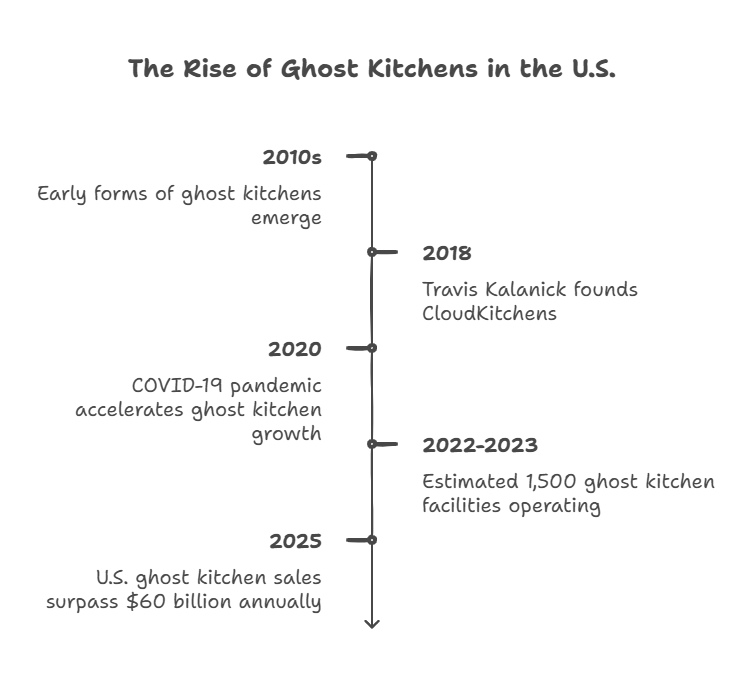
Several factors in the U.S. have fueled the ghost kitchen boom. Consumer demand in urban areas for quick, convenient meal delivery was already rising, thanks to busy lifestyles and the proliferation of delivery apps.
In 2020, about 111 million people in the U.S. used an online ordering app for food – a 17% jump from the year before – and that number has only grown.
Ordering dinner from your phone became second nature for many Americans, and ghost kitchens were built to fill those orders.
At the same time, food delivery platforms provided critical infrastructure: services like Uber Eats, Grubhub, and DoorDash handle the logistics of online menus, payment, and fleet of couriers, allowing ghost kitchen operators to reach a wide customer base without building their own delivery system.
This synergy between urban delivery demand and app technology created the perfect conditions for ghost kitchens to thrive.
By the early 2020s, ghost kitchens had become a significant segment of the U.S. restaurant landscape. Industry data around the pandemic period showed rapid growth.
For instance, by mid-2020 the U.S. was estimated to have around 1,500 ghost kitchen facilities operating, and the number has climbed with each passing year.
Big players jumped into the space as well – ex-Uber CEO Travis Kalanick founded CloudKitchens in 2018 to build ghost kitchen hubs, and major delivery companies tested their own kitchen centers (DoorDash opened its first ghost kitchen in Redwood City, CA around that time).
As of 2025, ghost kitchens are generating serious revenue. In fact, U.S. ghost kitchen sales are expected to surpass $60 billion annually, an astonishing figure that underscores how mainstream this once-unconventional idea has become.
In the wake of COVID-19, a fundamental shift occurred in dining habits – takeout and delivery now reign supreme for a huge slice of consumers, and ghost kitchens have emerged as a cornerstone of that new dining economy.
Where Are Ghost Kitchens Located?
One of the intriguing things about ghost kitchens is that they often hide in plain sight. Because they don’t need to attract walk-in customers, ghost kitchens aren’t paying top dollar for prime storefront real estate. So, where do you find a ghost kitchen?
The short answer: in out-of-the-way commercial spaces strategically placed for delivery coverage.
Many ghost kitchens set up shop in industrial zones or warehouse districts on the edges of major metro areas, where rent is cheaper than on Main Street. Picture a large warehouse subdivided into many mini-kitchens – stainless steel prep tables, ovens and stoves in each, with partition walls separating different operations.
Each kitchen unit might be rented by a different restaurant brand, or one company might run several brands side by side. From the outside, such a facility might look like any other anonymous building, except for a parade of delivery drivers coming and going.
Ghost kitchens also pop up in other unconventional venues. In some cases, they occupy converted commercial spaces like former catering kitchens, commissary facilities, or even shipping containers retrofitted as kitchens.
In urban centers, a ghost kitchen could be nestled in the back of a ghost kitchen hub or in the kitchen of a closed-down restaurant. There are even instances of ghost kitchens operating inside active brick-and-mortar restaurants – essentially a restaurant within a restaurant.
In those scenarios, a traditional restaurant might use its underutilized kitchen capacity to cook for a separate virtual brand alongside its normal dine-in menu.
For example, a family diner might host a late-night wings brand after 8pm, or a pizza shop might also run a virtual dessert brand out of the same kitchen.
Whether in a standalone facility or co-located within another business, ghost kitchens are typically situated based on delivery logistics: they want to be within a quick driving radius of a high volume of customers, even if the customers never see the kitchen itself.
Many such kitchens include features like designated driver pickup areas, parking spots, and waiting lounges with order-tracking screens to streamline the handoff to delivery couriers. The goal is to get food out the door and on its way to the customer as efficiently as possible, location be damned.
Why Ghost Kitchens Appeal to Restaurant Owners
For restaurant owners and food entrepreneurs, the ghost kitchen model has a very compelling business logic. The headline advantage is dramatically lower overhead costs. Without a dining room to maintain, ghost kitchen operators save on real estate and utilities – they can rent a smaller kitchen space in a less expensive part of town, rather than a large restaurant in a high-rent district.
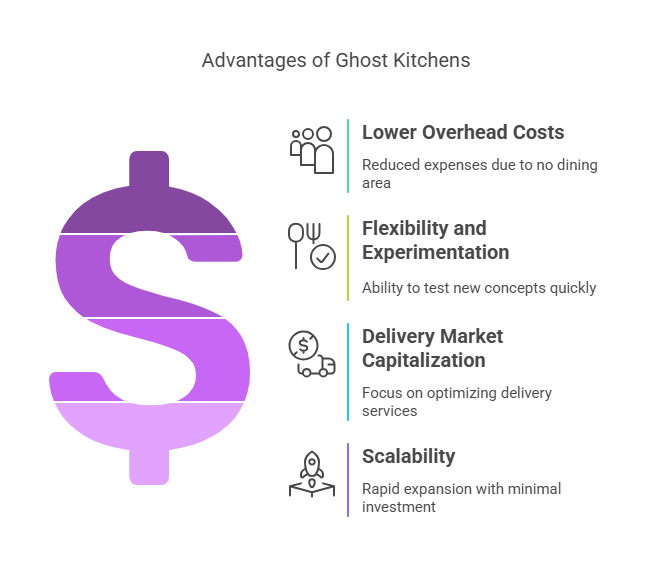
There’s no need to outfit the place with decor, seating, tableware, or other front-of-house trappings. Likewise, staffing needs are leaner: a ghost kitchen requires cooks and perhaps a kitchen manager and packer, but no waiters, bartenders, or hosts are needed to serve customers on-site.
This means labor costs are lower, and the team can be tightly focused on food production. All these savings on rent, furnishings, and staff can significantly reduce the cost of running a restaurant business.
Ghost kitchens also offer flexibility and faster experimentation for owners. Because the business exists primarily online, launching a new menu concept or even an entirely new brand involves far less risk and investment than opening a traditional restaurant.
Entrepreneurs can test multiple cuisines or culinary ideas from one kitchen, switching out concepts that don’t catch on and doubling down on those that do. In fact, with one set of ingredients and staff, an operator might run several distinct virtual brands simultaneously to maximize utilization of the kitchen.
For example, the same team could prepare sandwiches under one brand at lunch and tacos under a different brand at dinner, or craft vegan salads alongside comfort-food burgers. This multi-brand strategy allows ghost kitchen owners to tap into different customer demographics and dining occasions without needing separate physical venues for each concept.
If one idea isn’t performing, they can pivot quickly – change the online menu, maybe rebrand – without the sunk costs of remodeling a storefront. In other words, ghost kitchens make it easier to adapt and innovate on the fly in response to market trends.
Another big draw is the ability to capitalize on the delivery market boom. Traditional restaurants might see delivery as just one channel of many, but ghost kitchens live or die by it – which means they optimize everything for off-premise dining.
Menus can be streamlined and crafted specifically for items that travel well (no more soggy fries, if done right), packaging is chosen for efficiency and food quality, and kitchen workflows are designed to pump out orders quickly.
Owners benefit from the fact that digital ordering has been growing 300% faster than dine-in since 2014, and a majority of consumers now order delivery or takeout weekly. By being delivery-only, ghost kitchens meet customers where they are (at home or at work, ordering via phone) and can reach far more people than a single brick-and-mortar spot ever could.
From an expansion standpoint, ghost kitchens can be a scalable, asset-light way to grow a restaurant business. Instead of investing millions to build a new restaurant in a new city, a company can rent a ghost kitchen space and start taking orders in that market within weeks. This hub-and-spoke idea lets restaurant brands rapidly enter new geographic areas or test markets with minimal capital.
As one industry source put it, ghost kitchens enable you to have “prime real estate at a fraction of the cost” and even serve as satellite kitchens to expand your reach without the usual high risks. It’s no surprise that both scrappy local startups and large national chains in the U.S. have embraced ghost kitchens to boost profits and flexibility.
Even celebrity-backed ventures have jumped in – for instance, the virtual brand MrBeast Burger leveraged ghost kitchens nationwide and reportedly generated $100 million in revenue in 2022 with no dine-in locations.
For many restaurateurs, especially in the challenging post-pandemic business climate, ghost kitchens offer a path to growth that is quicker, leaner, and more adaptable to the changing tastes and ordering habits of consumers.
A New Frontier for Hospitality Jobs
Ghost kitchens aren’t just changing where and how food is cooked – they’re also creating new opportunities and considerations for hospitality workers. For job seekers, especially those coming from traditional restaurants, working in a ghost kitchen can be a different experience with its own appeal.
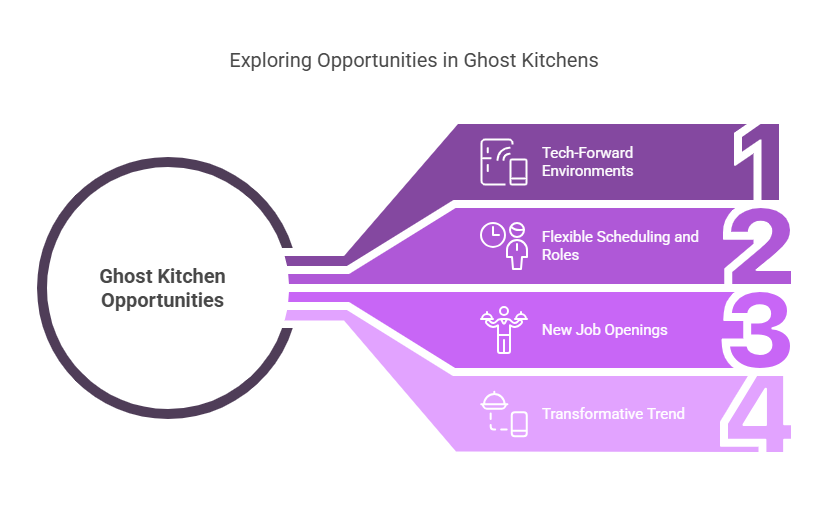
First, these kitchens tend to be tech-forward environments. Orders stream in through digital tablets or integrated software systems, and staff might juggle multiple delivery platforms at once. Kitchens are often outfitted with modern equipment and may use data analytics to forecast busy times and popular items.
For workers who are tech-savvy or eager to learn the latest restaurant tech (like kitchen display systems, delivery app dashboards, etc.), ghost kitchens provide a cutting-edge, fast-paced workplace.
In many cases, ghost kitchen companies consolidate all their delivery app orders into one screen or device to simplify the process, so employees gain experience in a digitally streamlined operation that could be the future of food service.
Another attractive aspect for workers is flexible scheduling and roles. Traditional restaurants have fairly set hours (lunch shift, dinner shift, closing times) and defined front-of-house vs. back-of-house roles. Ghost kitchens, by contrast, might operate extended hours to cater to late-night cravings or round-the-clock delivery demand.
For example, a ghost kitchen near a college campus might see peak orders for hot wings between 11 PM and 2 AM – a time when many dine-in restaurants are closed.
This creates opportunities for Cooks and staff to work unconventional hours that fit their personal schedules, whether it’s early morning prep for a breakfast-only virtual cafe or late-night cooking for the midnight snack crowd.
Flexible or part-time shifts can be more feasible in a ghost kitchen setting because there’s no need to staff an entire front-of-house crew at all times – the focus is purely on production and fulfillment. Additionally, since ghost kitchens often launch multiple concepts, an employee might have the chance to wear many hats in the kitchen.
One day you could be prepping ingredients for a Mexican menu, and the next day cooking burgers and plating comfort food, all within the same company. This variety can help workers build a broader skill set and keep the job from feeling monotonous. It’s a bit like working in a food hall’s worth of restaurants, except you’re doing it all from one kitchen.
Importantly, the rapid growth of ghost kitchens means new job openings are cropping up quickly. While these facilities do eliminate traditional server or bartender positions, they create plenty of culinary and operations roles – from head chefs and line cooks to expediters who coordinate orders, and quality control or customer service liaisons who handle any issues with online orders.
There is also demand for managers who can run the back-of-house efficiently and handle the complexity of multiple menus. For hospitality professionals, ghost kitchens represent a fast-growing segment where one can find opportunities to advance.
Being part of an innovative ghost kitchen team might also carry a certain excitement: it’s a chance to participate in a transformative trend in the restaurant industry, one that is redefining what “restaurant” even means.
Workers often take pride in knowing they are feeding a whole city neighborhood from behind the scenes, leveraging new tools and strategies to get meals out the door.
And given the high demand for experienced kitchen staff across the U.S. (especially after pandemic-era labor shortages), skilled workers may find ghost kitchens eager to hire and perhaps willing to offer competitive pay to secure talent.
The bottom line for job seekers is that ghost kitchens open up additional pathways in the hospitality field – ones that reward kitchen expertise, adaptability, and comfort with technology.
OysterLink: Connecting Ghost Kitchens with Talent
As ghost kitchens continue to spread across the U.S., a natural question arises: How do these delivery-only restaurants find the right staff, and how can job seekers find them?
This is where OysterLink comes into play. OysterLink is a hospitality-focused career platform designed to help both employers and workers in the restaurant industry connect more easily. In the context of ghost kitchens, it’s an especially valuable tool.
A ghost kitchen owner can face a unique hiring challenge – they need kitchen talent, but posting on generic job boards might attract applicants who don’t understand the delivery-only model or who aren’t specifically looking in the hospitality sector.
OysterLink solves that by providing a dedicated space just for restaurant and hospitality jobs, creating a targeted talent pool for roles like line Cooks, Chefs, and Kitchen Managers in concepts including ghost kitchens.
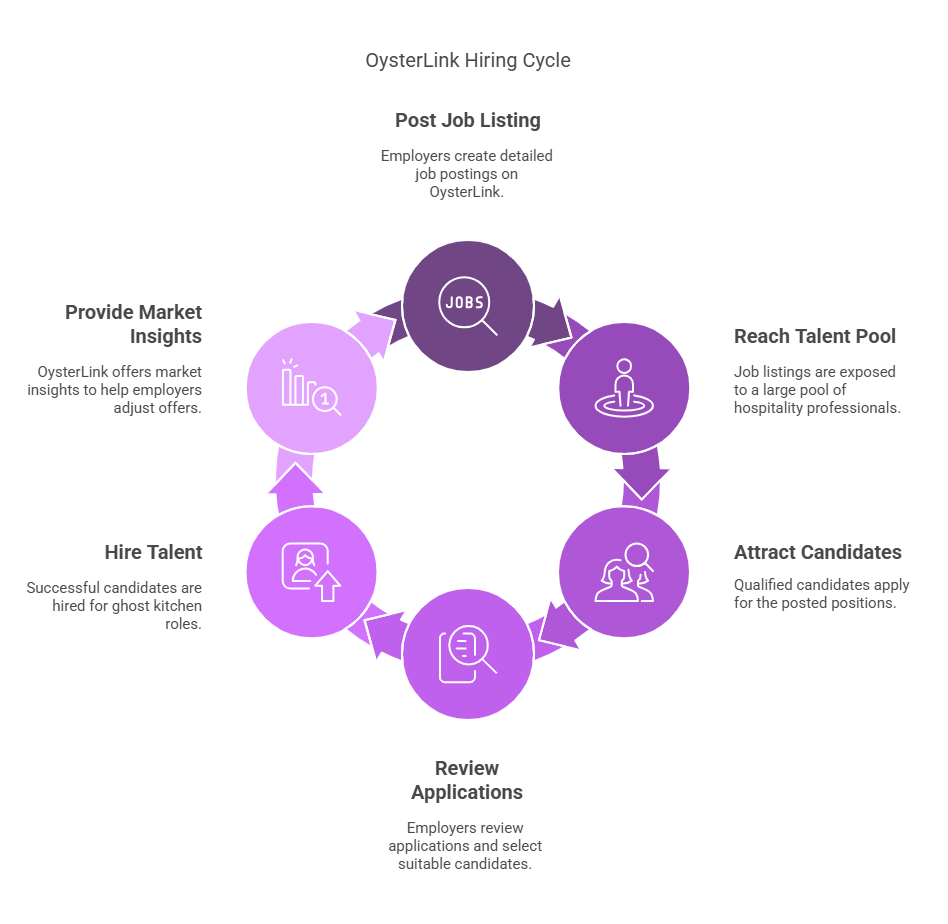
For ghost kitchen owners and operators:
OysterLink makes it simple to post jobs and reach qualified candidates. The platform is built exclusively for hospitality, meaning a job listing will be seen by people with restaurant experience and interest – not lost among tech or office job postings.
Employers can sign up and post a new position in minutes, costing only $50, which is a big plus for small businesses watching their budget.
Once the job is up, it’s exposed to hundreds of thousands of monthly visitors on OysterLink (over 400,000) who are specifically seeking restaurant and hospitality roles.
Ghost kitchen operators can list exactly what they need – maybe a late-night fry cook experienced with high-volume orders, or a daytime kitchen supervisor who can manage multiple virtual brands. OysterLink encourages detailed job descriptions, including responsibilities and real salary ranges, so that expectations are clear on both sides.
This level of transparency is especially helpful for ghost kitchen roles; candidates know upfront if a job is, say, part-time evenings only or requires experience with certain cuisines.
In addition, OysterLink provides market insights and hiring tips to employers – for instance, data on top paying jobs by position or location – which can help a ghost kitchen adjust its offer to attract talent in a competitive market.
For job seekers:
OysterLink opens the door to opportunities in this fast-growing ghost kitchen space that they might not find elsewhere. Rather than combing through generic job sites and seeing only vague posts like “Cook needed ASAP”, a candidate on OysterLink can browse a curated list of hospitality jobs with rich detail.
They can discover ghost kitchen openings and know they’re legitimate roles with reputable employers, because OysterLink focuses on connecting job seekers with vetted restaurant businesses. The platform also offers useful features for candidates, like a paycheck calculator to estimate earnings, and career resources ranging from resume tips to interviews with industry leaders (including Chefs who have succeeded in new models like ghost kitchens).
This added context helps applicants not only find jobs but also prepare for them. And because all the jobs on the site are hospitality-centric, a user can easily filter for the roles and locations they want (e.g. “prep cook in Los Angeles” or “kitchen manager in Chicago”) without wading through irrelevant listings.
In short, OysterLink serves as a meeting ground for ghost kitchen employers and eager hospitality professionals, streamlining the hiring process on both ends.



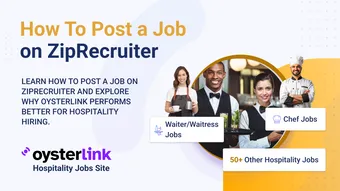
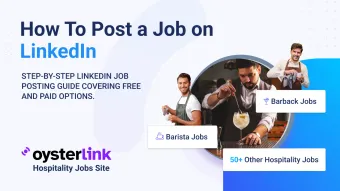
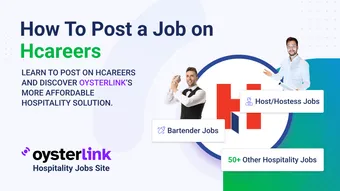



Loading comments...